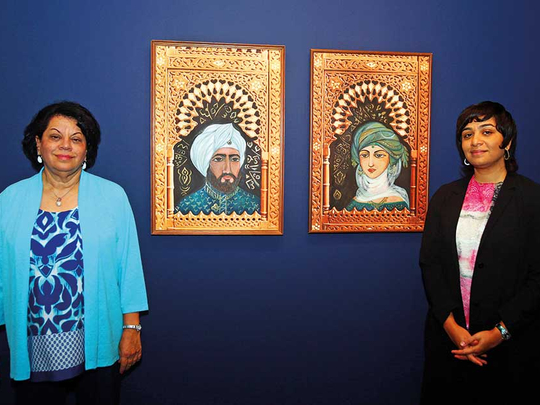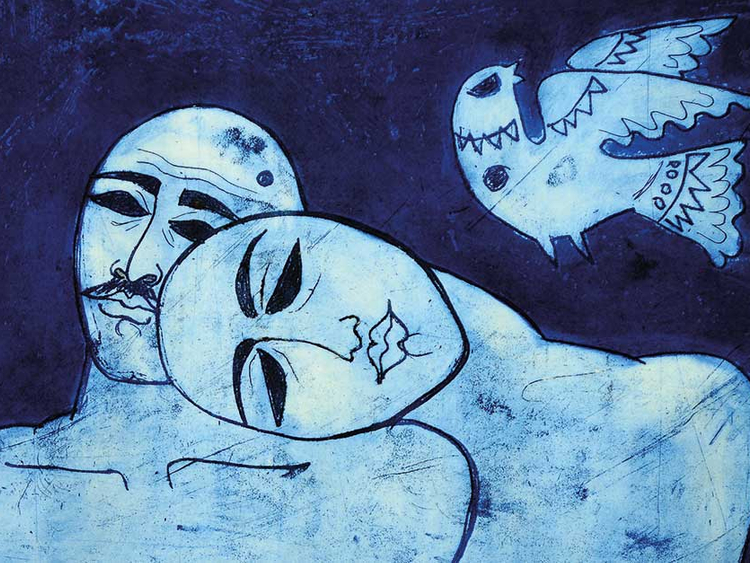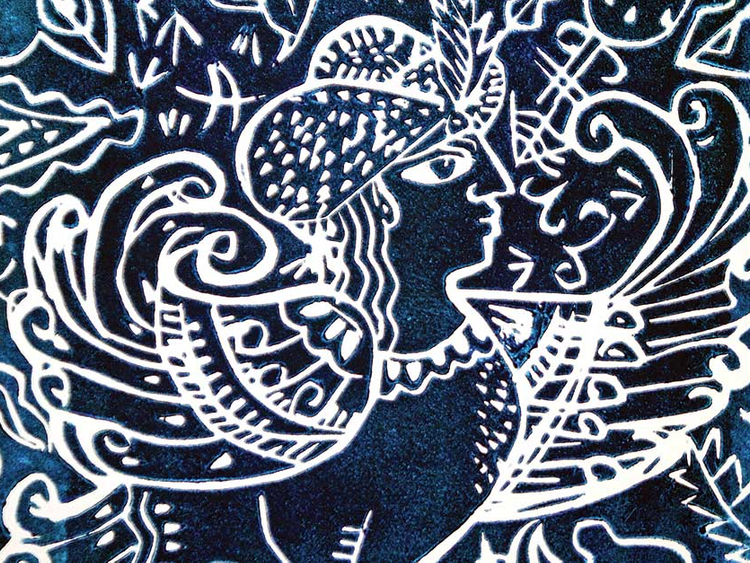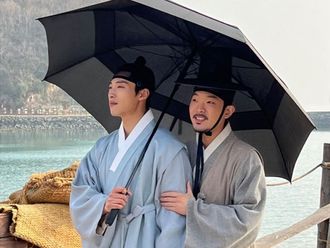
“I am very happy. It is a great time and a great moment. I am happy to show my work in Sharjah. This is one of the biggest exhibitions in my life,” says renowned Kuwaiti artist Thuraya Al Baqsami to the Weekend Review.
The occasion was the opening of the largest retrospective display of her works to date at the Sharjah Art Musem on October 11, bringing together artworks from private collections, personal archives and pieces that have never been exhibited in public before, including her illustrations.
Titled Lasting Impressions: Thuraya Al Baqsami, the exhibition is guest-curated by Thuraya’s daughter Monira Al Qadiri, a leading contemporary artist herself.
“We worked very hard, but the result has been excellent,” the veteran artist said after touring the gallery halls with the VIPs and invited guests during the inaugural evening which also saw the launch of a new book about her work, and the screening of a documentary about her career at the museum as part of the exhibition.
“The inspiration behind my work is from various places. I am like a sponge — expressing what’s going on around me in images as well as words.
“I started to collect her works from 2010 and we did a smaller show in 2011 in Kuwait,” said Al Qadiri. “And since then I have been dreaming that the show will become bigger and more historic. Last year, the Sharjah Art Museum approached us for this show. I am happy since I have been working on this for a couple of years.”
“In the new book we have published, there are four essays by different writers about her work. Yes, it is for the first time that this amount of her work — her full history in fact — is being showcased,” said Al Qadiri.
As the show in Sharjah testifies, Al Baqsami, over the past five decades had developed a highly singular art practice, mirroring her life journey in many ways. Critics had noted that her work reflected varied cultural influences, ranging from her Arab heritage and Persian ancestry, to her artistic training in Russia, and her time spent on the African continent.
With such a background, she viewed the world from “social, political, quotidian and fantastical perspectives, and she focused these lenses on women, whose individual stories are narrated through different guises.”
When asked about her productivity and longevity as an artist, Al Baqsami said: “It is a long journey. I started when I was 13, now I am 66. But I am happy when I look back at my growth, how my work has developed, changed over the course of the years in terms of the subject, medium and technique — everything.”
“Mostly, I Iike to paint women — they are important to my art. You could also see some of my political work, and also work inspired by my stay in Moscow for seven years and in Africa for five years.”
“Then there are works depicting what happened during the Occupation of Kuwait and the effect it had on me and my family — I show part of it — and the liberation, how Kuwait regains normalcy after the war. My husband was a Prisoner of War.”
Indeed, one of her paintings in 1992 titled Return of the Parted in acrylic on canvas is very autobiographical depicting a moment of the family reunion when her husband returned. It stands out with its use of bright colour and the joy and pain depicted to such great effect.
“I just wanted to show how joyful it is when someone dear who is absent comes back. It’s not only about Kuwait. It is a universal emotion,” said Al Baqsami.
She was awarded the state prize for her book Cellar Candles (1993) in which she rendered her ordeals during the war into poetic fiction. The book had since been translated into more than 10 languages.
“The inspiration behind my work is from various places. I am like a sponge — expressing what’s going on around me in images as well as words,” Al Baqsami said.
Her written work comprises six short story collections, three volumes of poems, a novel, three children’s books, art criticism etc. She had also been working as a journalist in government magazines such as Al Arabi, newspapers, radio and TV and writing and commenting on women’s issues, art and culture and social satire columns that were inspired from the street. She stopped working as a journalist some time ago to concentrate fully on her art and writing.
Being so versatile with words, art and literature provided alternate channels for her imagination and practice. It has been noted that “the characters in her paintings always seem to conceal a backstory. By deftly incorporating each of these layers, often within a single work, Al Baqsami offers a rare feminist approach to art making, a remarkable position to take in her native Kuwait and within the wider region.”
Currently, Al Baqsami is on a mammoth project of creating 1,000 paintings to form a giant mural. Out of the 1,000, she has already created 680. When asked about the theme, she quipped: “It is related to the 1,000 adventures of a woman. It is a big adventure,” pointing to herself. Some of these paintings are also part of the current show in Sharjah.
When asked about her copious output, Al Baqsami laughed out loud: “I was young and like a devil… I was young and wanted to do everything. The only thing I could not do was flying. But I managed — I have three children, house, held many jobs … worked with the ministry, Radio, TV and newspaper.”
The strength and the tenacity to create for Al Baqsami comes not only from her art. “I believe in one thing. As you exist, you have to work, and to live. When you leave, you should leave behind something for people to remember you. If you leave behind only your clothes, shoes and beautiful bags, your children will donate it to charity. Nobody will remember you. I believe that I have to do something to keep my name going even after I leave.”
She recalled the Sixties when the art movement started in Kuwait. “There were a lot many artists during my time and even now. But many of them stopped to produce, to do art. We still have a very good art movement in Kuwait. I am one from the old generation who did not stop.”
About the contemporary art scene and the upcoming artists, she said: “It is very good now and with the internet and social media, they can connect as well as study and absorb many trends at the touch of a button… Media has now connected Arab artists in a positive way.”
Manal Ataya, Director General of Sharjah Museums Authority, commenting on the retrospective said: “This exhibition captures the evolution of the Gulf through one artist’s journey and celebrates the achievements of women cultural practitioners in the region. We are confident that it will play an important role in influencing the emerging generation of talented artists.”
N. P. Krishna Kumar is a writer based in Dubai.
Lasting Impressions: Thuraya Al Baqsami runs at the Sharjah Art Museum until December 16, 2017.













